Abstract
A single-shock stimulus to the skin of widespread and distant parts of the body such as the face, sites in the upper limb, trunk, buttock, and feet produced changes in amplitude of the ankle jerk. A regulated and stabilized system was used for eliciting the ankle jerk and for delivering an unvarying single-shock conditioning stimulus; 35 normal subjects were studied. The characteristics of the recovery curve of the monosynaptic reflex after stimulation at these cutaneous sites are described.
Full text
PDF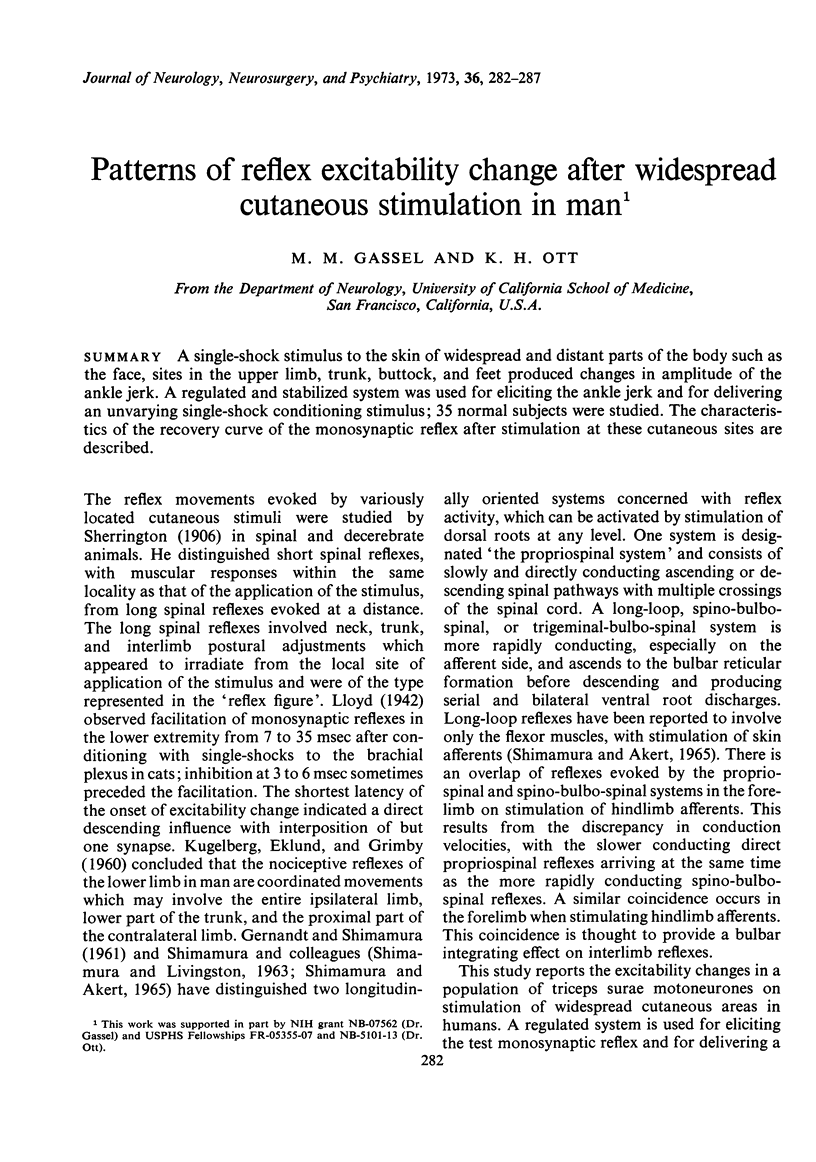
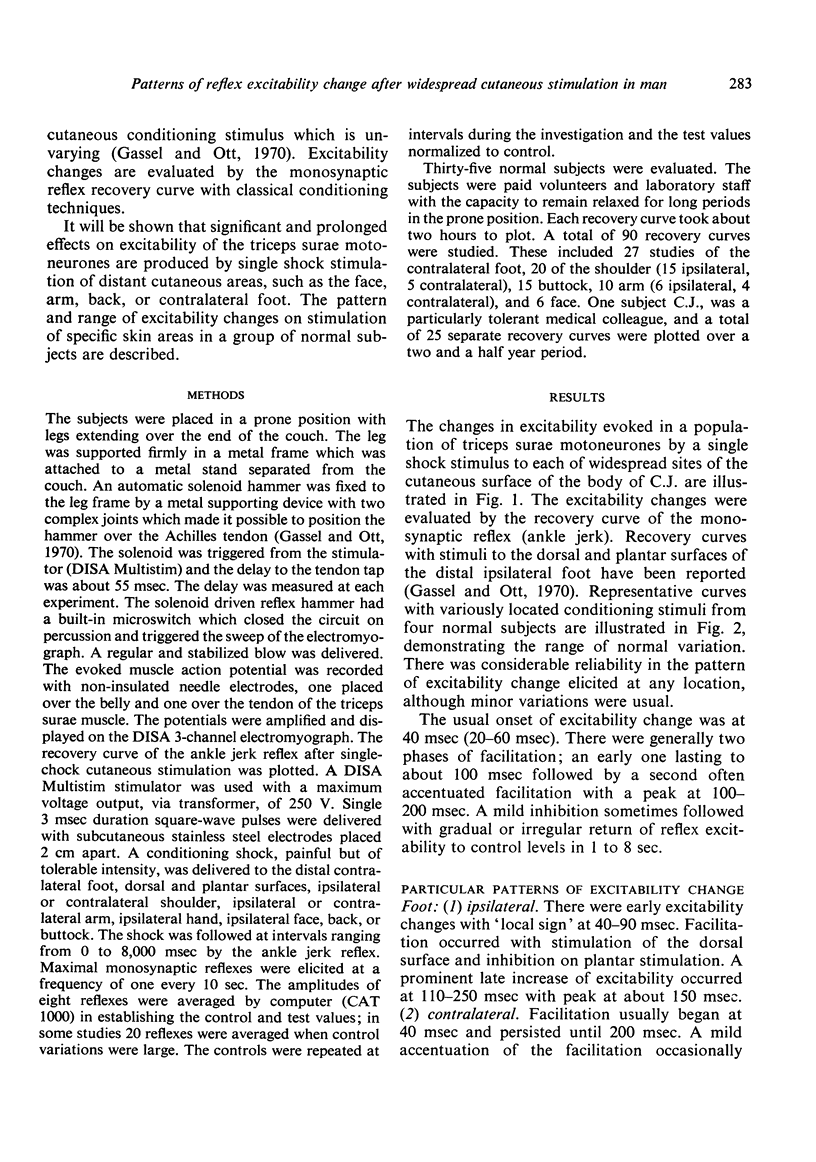
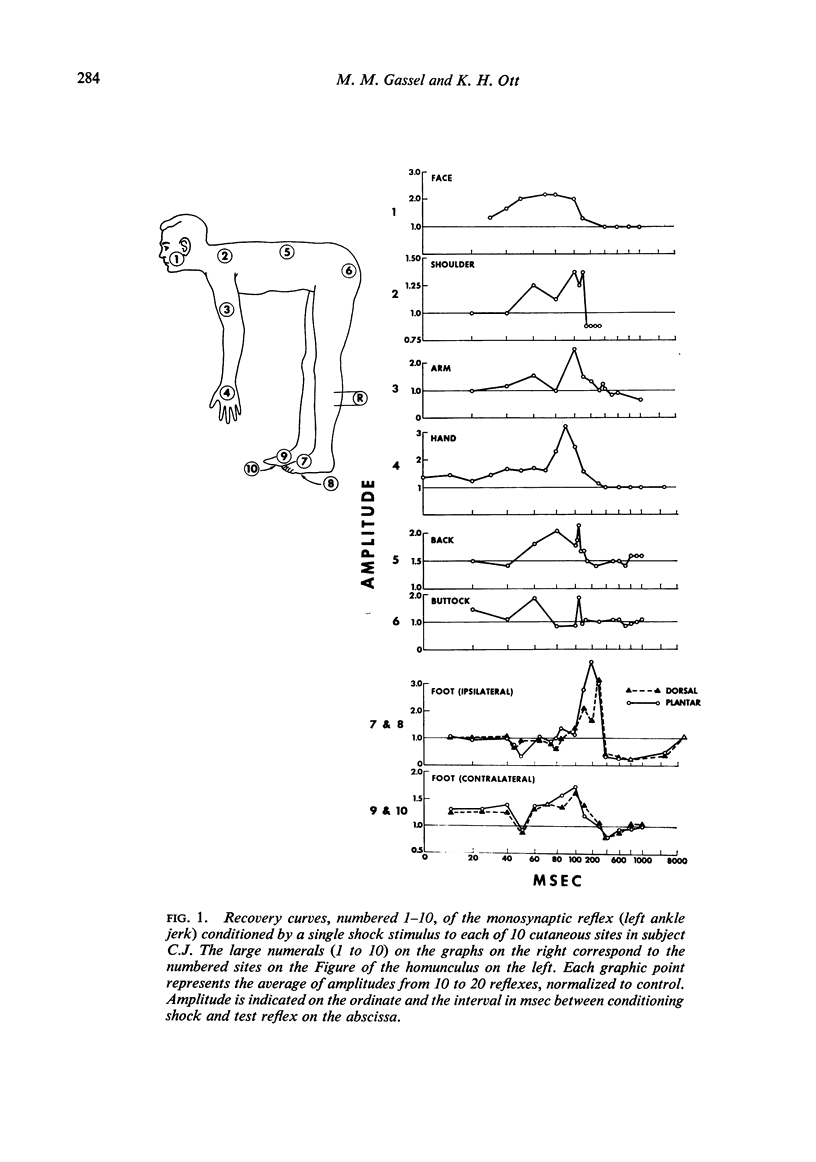
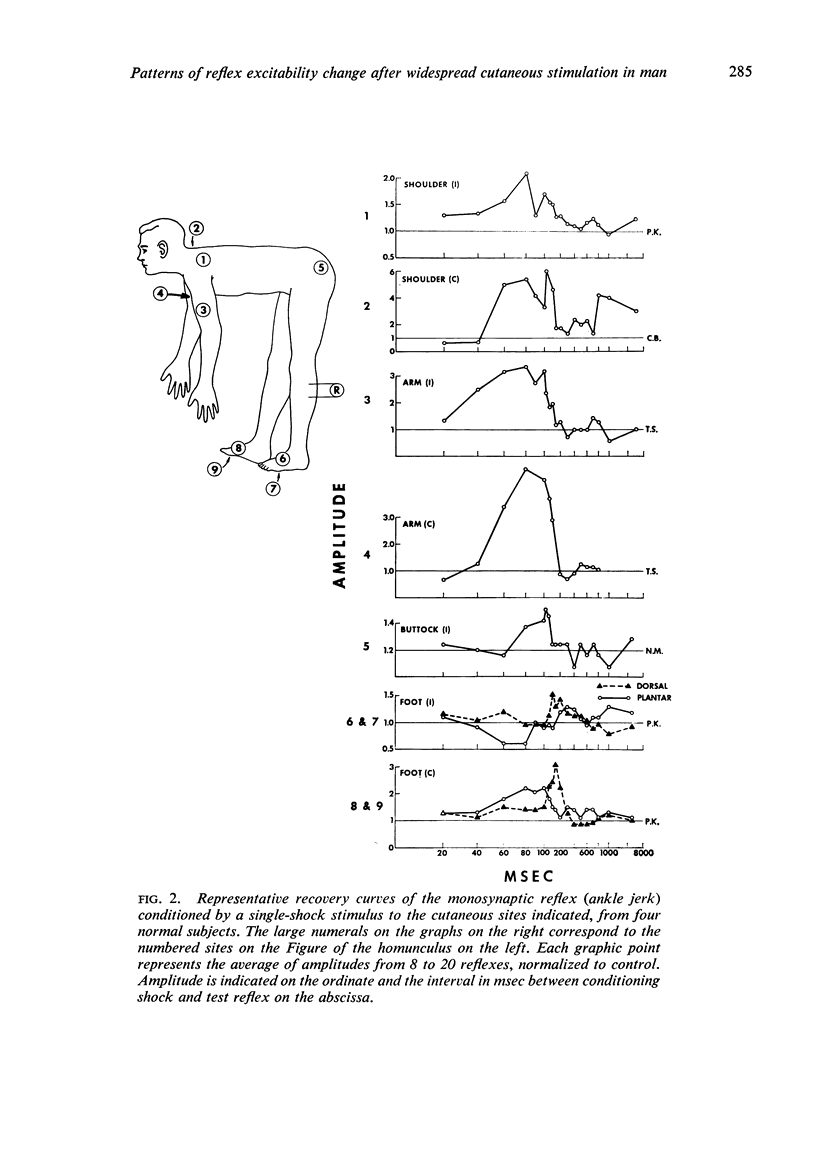
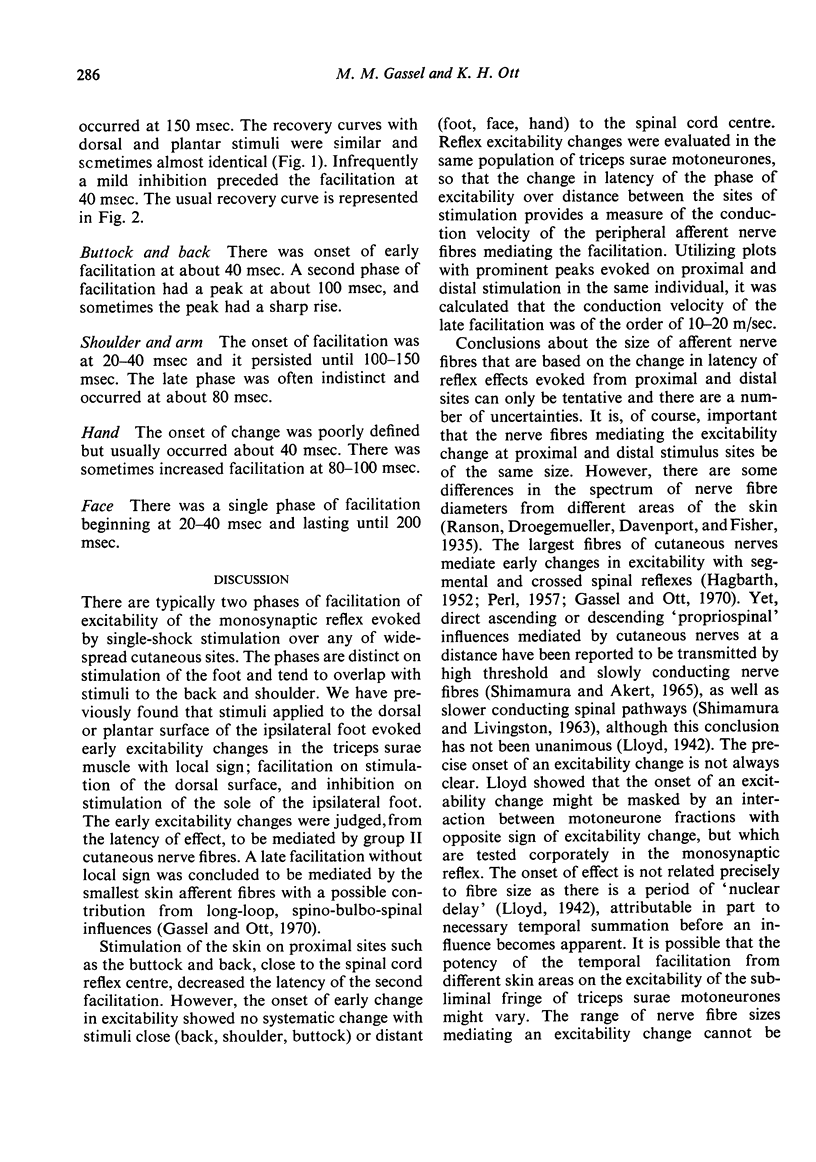
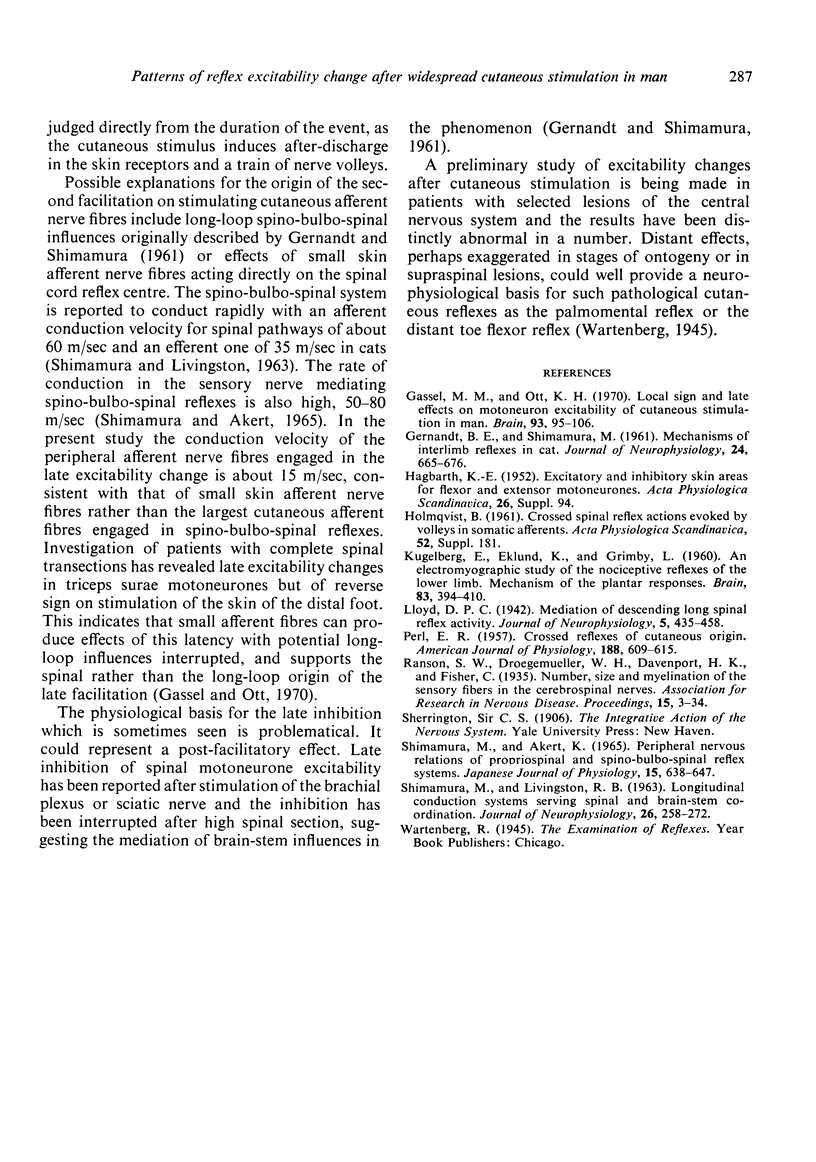
Selected References
These references are in PubMed. This may not be the complete list of references from this article.
- GERNANDT B. E., SHIMAMURA M. Mechanisms of interlimb reflexes in cat. J Neurophysiol. 1961 Nov;24:665–676. doi: 10.1152/jn.1961.24.6.665. [DOI] [PubMed] [Google Scholar]
- Gassel M. M., Ott K. H. Local sign and late effects on motoneuron excitability of cutaneous stimulation in man. Brain. 1970;93(1):95–106. doi: 10.1093/brain/93.1.95. [DOI] [PubMed] [Google Scholar]
- KUGELBERG E., EKLUND K., GRIMBY L. An electromyographic study of the nociceptive reflexes of the lower limb. Mechanism of the plantar responses. Brain. 1960 Sep;83:394–410. doi: 10.1093/brain/83.3.394. [DOI] [PubMed] [Google Scholar]
- PERL E. R. Crossed reflexes of cutaneous origin. Am J Physiol. 1957 Mar;188(3):609–615. doi: 10.1152/ajplegacy.1957.188.3.609. [DOI] [PubMed] [Google Scholar]
- SHIMAMURA M., LIVINGSTON R. B. Longitudinal conduction systems serving spinal and brain-stem coordination. J Neurophysiol. 1963 Mar;26:258–272. doi: 10.1152/jn.1963.26.2.258. [DOI] [PubMed] [Google Scholar]


